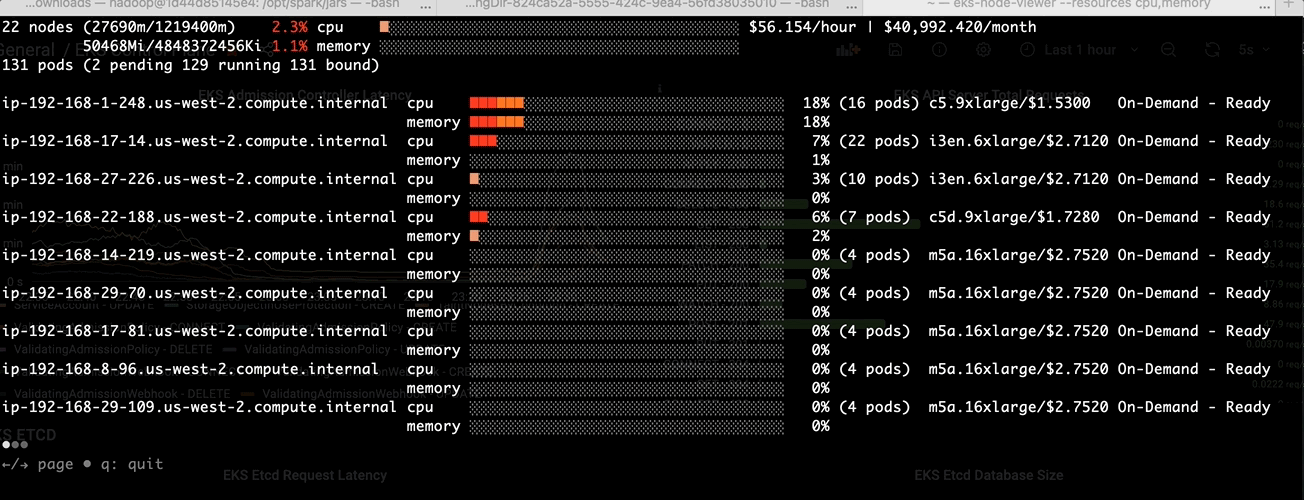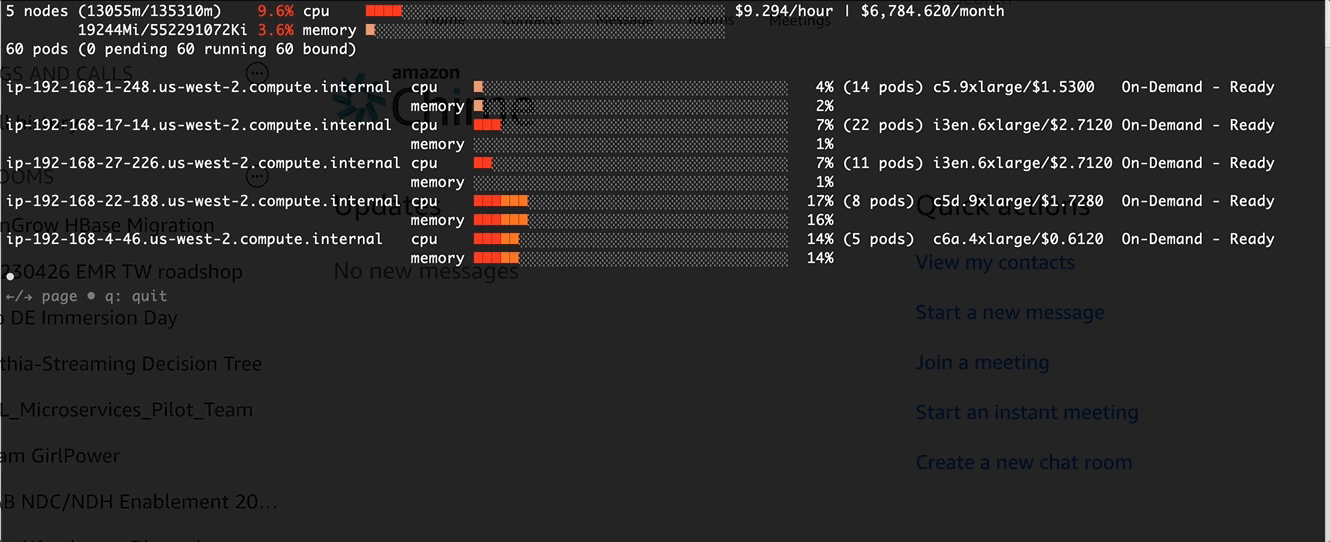Bin packing for Amazon EKS
Introduction
In this post, we will show you how to enable a custom scheduler with Amazon EKS when running DoEKS especially for Spark on EKS, including OSS Spark and EMR on EKS. The custom scheduler is a custom Kubernetes scheduler with MostAllocated strategy running in data plane.
Why bin packing
By default, the scheduling-plugin NodeResourcesFit use the LeastAllocated for score strategies. For the long running workloads, that is good because of high availability. But for batch jobs, like Spark workloads, this would lead high cost. By changing the from LeastAllocated to MostAllocated, it avoids spreading pods across all running nodes, leading to higher resource utilization and better cost efficiency.
Batch jobs like Spark are running on demand with limited or predicted time. With MostAllocated strategy, Spark executors are always bin packing into one node until the node cannot host any pods. You can see the following picture shows the
MostAllocated in EMR on EKS.

LeastAllocated in EMR on EKS

Pros
- Improve the node utilizations
- Save the cost
Considerations
Although we have provided upgrade guidance, support matrix and high availability design, but maintaining a custom scheduler in data plane needs effort including:
- Upgrade operations. Plan the upgrading along with your batch jobs, make sure the scheduler are running as desired.
- Monitoring the scheduler. Monitoring and alerting are required for production purpose.
- Adjust the scheduler pod resource and other customizations regarding your requirements.
Deploying the Solution
Clone the repo
git clone https://github.com/aws-samples/custom-scheduler-eks
cd custom-scheduler-eks
Manifests
Amazon EKS 1.24
kubectl apply -f deploy/manifests/custom-scheduler/amazon-eks-1.24-custom-scheduler.yaml
Amazon EKS 1.29
kubectl apply -f deploy/manifests/custom-scheduler/amazon-eks-1.29-custom-scheduler.yaml
Other Amazon EKS versions
- replace the related image URL(https://gallery.ecr.aws/eks-distro/kubernetes/kube-scheduler)
Please refer to custom-scheduler for more info.
Set up pod template to use the custom scheduler for Spark
We should add custom scheduler name to the pod template as follows
kind: Pod
spec:
schedulerName: custom-k8s-scheduler
volumes:
- name: spark-local-dir-1
hostPath:
path: /local1
initContainers:
- name: volume-permission
image: public.ecr.aws/docker/library/busybox
# grant volume access to hadoop user
command: ['sh', '-c', 'if [ ! -d /data1 ]; then mkdir /data1;fi; chown -R 999:1000 /data1']
volumeMounts:
- name: spark-local-dir-1
mountPath: /data1
containers:
- name: spark-kubernetes-executor
volumeMounts:
- name: spark-local-dir-1
mountPath: /data1
Verification and Monitor via eks-node-viewer
Before apply the change in the pod template

After the change: Higher CPU usage at pod schedule time

Conclusion
By using the custom scheduler, we can fully improve the node utilizations for the Spark workloads which will save the cost by triggering node scale in.
For the users that running Spark on EKS, we recommend you adopt this custom scheduler before Amazon EKS officially support the kube-scheduler customization.